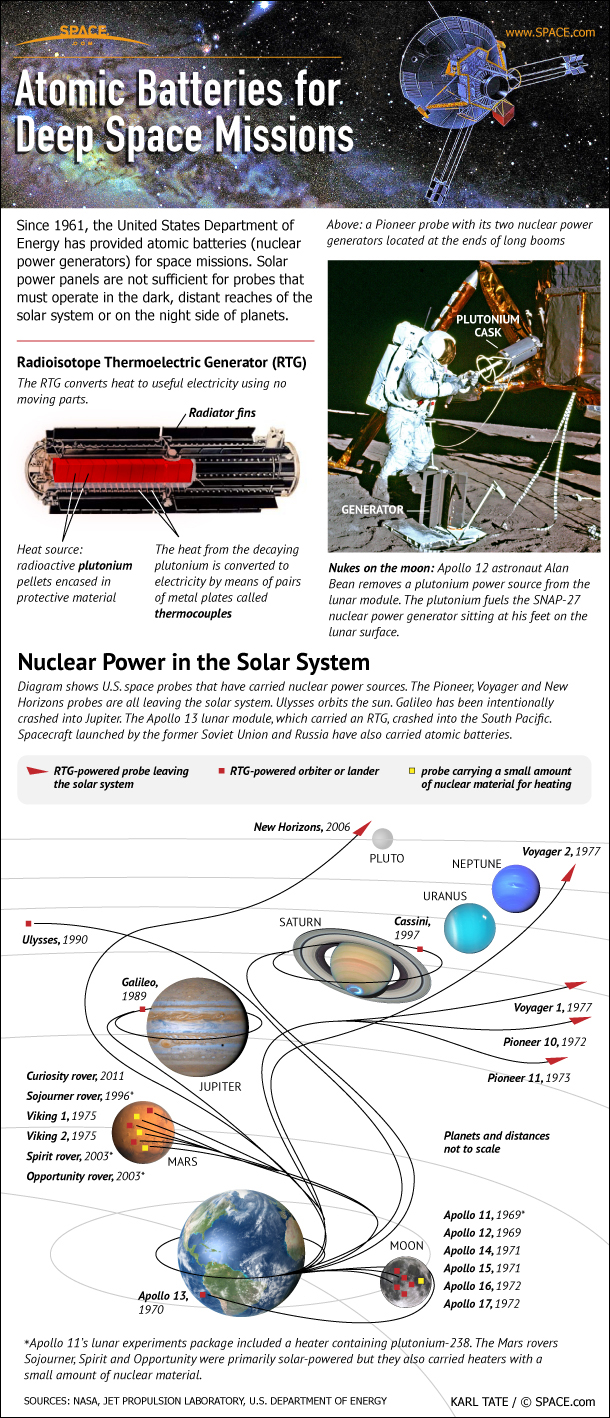Nuclear Generators Power NASA Deep Space Probes (Infographic)

For more than 50 years, NASA's robotic deep space probes have carried nuclear batteries provided by the U.S. Department of Energy. Even the crewed Apollo moon landings carried nuclear powered equipment.
However, the United States' supply of plutonium-238, which fuels these batteries, called radioisotope thermoelectric generators (RTGs), is running low. Experts worry that ambitious planetary science missions in the future may have to be put on hold until more of the radioactive substance is available.
Mars Mission May Be Curtain Call for Plutonium-Powered Spacecraft
Complete Coverage: NASA's Huge New Rover Launching to Mars
Our Solar System: A Photo Tour of the Planets
Breaking space news, the latest updates on rocket launches, skywatching events and more!

Karl's association with Space.com goes back to 2000, when he was hired to produce interactive Flash graphics. From 2010 to 2016, Karl worked as an infographics specialist across all editorial properties of Purch (formerly known as TechMediaNetwork). Before joining Space.com, Karl spent 11 years at the New York headquarters of The Associated Press, creating news graphics for use around the world in newspapers and on the web. He has a degree in graphic design from Louisiana State University and now works as a freelance graphic designer in New York City.
